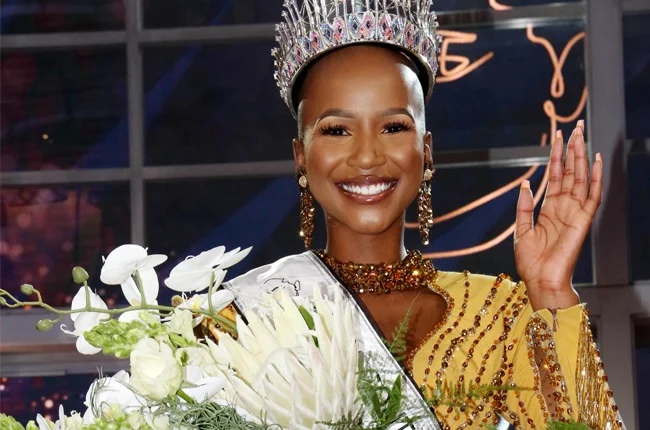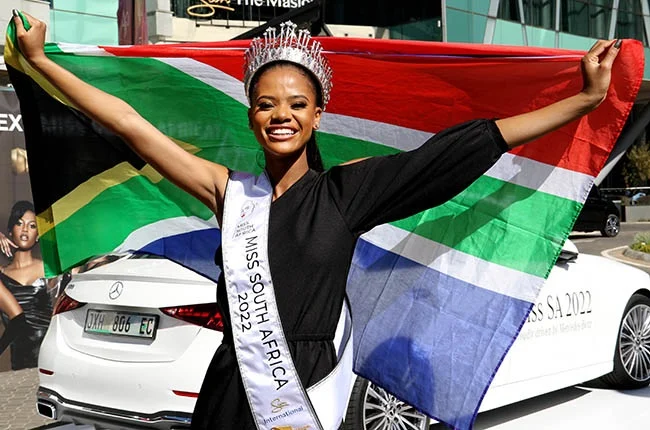Throughout the history of Miss Universe, the main contest has varied widely in terms of annual scheduling. In the last decade, the Miss Universe competition has been consistently held over a two-week period between early November and late January. Because of television schedule demands (largely as a result of international timezone differences) or exceptional events happening during the organizing process (such as the ongoing COVID-19 pandemic, the Olympics, FIFA World Cup and US and national elections in the hosting country), if the schedule demands wants the event is sometimes postponed to next year (as with the 2014, 2016 and 2020 and 2022 editions). The most recent edition edition was Miss Universe 2021 held in Eilat, Israel on 13 December 2021.The 2022 pageant is scheduled for 14 January,2023 and will be held in New Orleans,United States. Between the early 1970s through the late 2000s, the pageant spans a full month (typically between March and June), allowing time for rehearsals, appearances, and the preliminary competition, with the winner being crowned by the previous year’s titleholder during the final competition.
According to the organizers, the Miss Universe contest is more than a beauty pageant, though they are expected to participate in swimsuit and evening gown competitions. Women aspiring to become Miss Universe must be intelligent, well-mannered, and cultured. If a candidate is unable to perform well during each round, she is often eliminated. Normally, the placements of the candidates are determined by a ranked vote, where each judge ranks each of the candidates individually and within the stipulated rules. Commencing at the first pageant until 2016, the pageant semifinalists were chosen on a round robin system. Between 2017 and 2019, the semifinalists were announced per continental group and wildcard list, and in 2020 returned to randomized block during the live telecast. All the results of the preliminaries are reset at the start of the final night and a new competition starts with the highest placed positions at the semifinals. In each round of the grand final, the group of candidates with the lowest rates are progressive eliminated. However, this criterion can change each year with the use of weighted averages or with points accumulated by stages, or the assessment in ascending or descending order. Currently, if ties occur in the final rounds the preliminary results are used.
The winner then signs a contract with the Miss Universe Organization that can last from seven to eighteen months (the period of its duration is variable, as it follows the demands of the Miss Universe Organization). The new Miss Universe takes office immediately after the coronation and takes on a public cause in which she becomes the ambassador for a year to spread messages about the control of diseases, peace, and public awareness of AIDS (though the organization’s more recent humanitarian works have included various causes such as women’s and ethnic minority rights, along with contemporary racial issues, public health issues and the consequences of global warming). Aside from the job, the winner also receives a cash allowance for her entire reign, a New York Film Academy scholarship, a modeling portfolio, beauty products, clothes, shoes, as well as styling, healthcare, and fitness services by different sponsors of the pageant. She also gains exclusive access to events such as fashion shows and opening galas, as well as access to casting calls and modeling opportunities throughout New York City. Between 1996 and 2015, the winner is given the use of a Trump Place apartment in New York City during her reign, which she shares with the Miss USA and Miss Teen USA titleholders.
If the winner, for any reason, cannot fulfill her duties as Miss Universe, the first runner-up takes over. This protocol has happened only once as of 2022, when Panama’s Justine Pasek succeeded Russia’s Oxana Fedorova as Miss Universe in 2002 after the latter’s dethronement later that same year. Aside from the main winner and her runners-up, special awards are also given to the winners of the Best National Costume, Miss Photogenic, and Miss Congeniality. The Miss Congeniality award is chosen by the delegates themselves. In recent years, Miss Photogenic has been chosen by popular internet vote (the winner used to be chosen by media personnel covering the event), and the winning country for Best National Costume is announced live after the naming of the semifinalists during the coronation night.

Crowns of Miss Universe
The crown of Miss Universe has changed nine times over the course of its 70-year history.
- Romanov Imperial Nuptial Crown (1952) as the first crown, was previously owned by the now-defunct Russian monarchy. It was used by Armi Kuusela in 1952.
- Romanov Diadem Crown or Metal Bronze Crown (1953) — When Christiane Martel of France became Miss Universe 1953, the nuptial crown was replaced by a metallic bronze crown. She was the only Miss Universe titleholder to wear this crown.
- Star of the Universe (1954–1960) — This crown was used from 1954 to 1960. It was named as such due to the star shape at the top of the crown. It is made up of approximately 1,000 Oriental cultured and black pearls set in solid gold and platinum and only weighed 1.25 pounds. It was insured for US$500,000.
- Lady Rhinestone Crown or Coventry Crown (1961–2001) — This crown was purely made from rhinestones, debuting in 1961 as part of the 10th anniversary of the Miss Universe pageant. Only Marlene Schmidt from Germany and Norma Nolan from Argentina wore this crown. In 1963, renowned jeweler Sarah Coventry reinvented the rhinestone crown which featured a female figure (holding a scepter) as its main centerpiece. The cheaper cost of its rhinestone design made it possible to create exact replicas of the crown to be given to outgoing titleholders. The design was slightly modified in 1973 for the wearer’s convenience, and was dubbed as The Lady Crown. This was used until 2002, when Denise Quinones became its last crown holder before relinquishing her role as Miss Universe, and the Mikimoto Pearl company accepted the offer to sponsor a commemorative crown for the Miss Universe Organization during the same year’s 50th overall edition for the pageant.
- Mikimoto Crown (2002–2007; 2017–2018) — used from 2002 to 2007 for the 50th commemorative anniversary of the Miss Universe organization, this crown was designed by Tomohiro Yamaji for the Mikimoto Company, the official jewel sponsor of the Miss Universe Organization. The crown depicted the phoenix rising, signifying status, power and beauty, as stipulated in their sponsorship deal. The crown has 500 natural colorless diamonds of almost 30 carats (6.0 g), 120 South Sea and Akoya pearls, ranging in size from 3 to 18 mm diameter and is valued at US$250,000. The crown was designed for the pageant on Mikimoto Pearl Island in Japan with the Mikimoto crown and tiara being first used for Miss Universe 2002, which was unveiled by former proprietor Donald Trump. Among pageant connoisseurs, the Mikimoto crown is reputedly the most sought among beauty titleholders, before finally being retired for use after Catriona Gray became the last Miss Universe winner to ever use the crown on her reign until 2019.
- CAO Crown (2008) — In 2008, Dayana Mendoza of Venezuela was crowned with a tiara designed by a tandem of Rosalina Lydster and Dang Kim Lien of CAO Fine Jewelry. The crown was valued at US$120,000, was made of an 18 karat combination of white and yellow gold and composed of over 1,000 precious stones, including 555 white diamonds (30 carats), 375 cognac diamonds (14 carats), 10 smoky quartz crystals (20 carats) and 19 morganite gemstones (60 carats). The yellow lustre of the gold represents the prosperous thriving economy in Vietnam as symbolized by a Vietnamese Crane heron. However, Mendoza declined to use this crown and thus insisted on the Mikimoto crown when she crowned her compatriot, Stefanía Fernández as her successor.

- Diamond Nexus Crown (2009–2013) — From 2009 to 2013, Diamond Nexus Labs made the Miss Universe crown. The crown is set with 1,371 gemstones, weighing a total of 416.09 carats (83.218 g). It contains 544.31 grams of 14k and 18k white gold as well as platinum.[citation needed] The crown features synthetic rubies to represent Miss Universe’s HIV/AIDS education and awareness platform. Diamond Nexus Labs is the first ever eco-friendly Official Jeweler of Miss Universe and was selected as part of NBC Universal’s “Green is Universal” initiative.
- DIC Crown (2014–2016) — From 2014 to 2016, Paulina Vega, Pia Wurtzbach and Iris Mittenaere were decorated with the DIC Crown, estimated to be worth US$300,000 and produced by Czech company Diamonds International Corporation (DIC). The whole production process took approximately four months and required the work of ten artisans. The crown is reminiscent of the Manhattan Skyline and is composed of 311 diamonds, 5 pieces of blue topaz, 198 pieces of blue sapphire, 33 pieces of heat—fired crystals, and 220 grams of 18k karat white gold. The grand total weight of the crown is 411 grams. This crown was retired in 2017 due to a copyright infringement and subsequent payment issues between DIC and the Miss Universe Organization.
- Mouawad Power of Unity Crown (2019–present) — On December 5, 2019, the new jeweler of the Miss Universe Organization, Mouawad Jewelry, revealed the Mouawad Crown that is estimated to be worth US$5 million, making it the world’s most expensive beauty pageant crown on record. The crown consists of Golden Canary Diamond that weighs 62.83 carat. According to Pascal Mouawad, the crown symbolizes Ambition, Diversity, Community, and Beauty.
